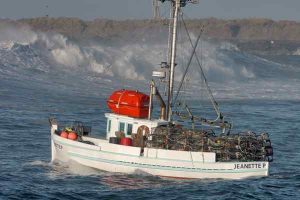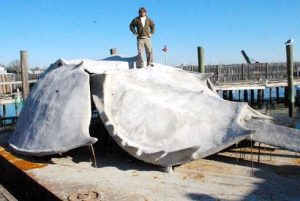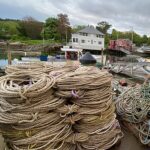Tag Archives: Sea Otter

Mr. Common Resources, Meet “Miss-Management”
The contradictions in redundant multi-agency management and layers of regulation of common resources have made management paralyzed. The need for management revision stretches across the entire spectrum of resource providers from agriculture in the heartland to fishing on the coast and energy production everywhere between. This problem is compounded by an onslaught of nonprofit and NGO lobby influence/infiltration. A narrative was created to indoctrinate the public. The narrative of resource providers being the problem of ecosystem failures is a deflection of accountability to manage. Common resource management or “conservation” was reinvented. The influence of NGO’s installed a term called “precautionary management.” The title is Marine Mammal “Protection” Act, it should be the Marine Mammal “Management” Act. By Jeff Crumley >click to read<,video, and a link to a short 10 question survey 11:39 #seaotter, #usfws, #seaurchin #ESA #MMPA
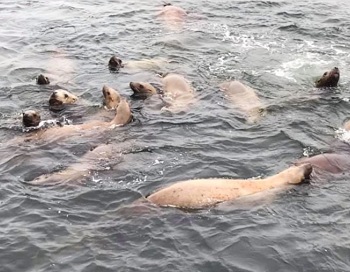
FurCanada open house will kickstart campaigns for a seal, sea lion and sea otter commercial fishery in British Columbia
The fur is set to fly in Nanaimo this weekend, with an open house to kickstart campaigns for a seal, sea lion and sea otter commercial fishery in British Columbia. FurCanada, a Vancouver Island company, hopes the event on Dec. 14, will raise awareness about the overpopulation of seal and sea lions which are decimating B.C.’s endangered and threatened chinook salmon stocks. Thomas Sewid, who is President of Pacific Balance Marine Management, which is the organization leading the development of the seal, sea lion and sea otter industry estimates that of the 27 million chinook smolts produced a year in the Salish Sea (wild and hatchery) the pinnipeds are consuming about 24 million of them. >click to read< 19:53

Solutions sought to ease conflicts over Southeast Alaska’s rising sea otter populations
A hundred years ago, the fur trade wiped out sea otters in Southeast Alaska. They were reintroduced in the 1960s with 412 animals brought from Amchitka Island and Prince William Sound. Since then, they’ve done really well. The last official estimate in 2012 shows that there are more than 25,000 of them. But their success has changed their environment as they’re a keystone species. “Many of those effects are really disruptive to the existing, you know, commercial activities like shell fisheries that have developed.” >click to read< 07:57
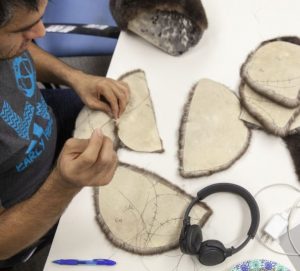
Otterskin sewing workshops promote ‘sustainable cottage industry’ in coastal Alaska
A series of workshops in communities around Southeast Alaska aims to expand the practice of traditional Alaska Native skin-sewing with seal and sea otter fur.,,, In the last few decades, things have been looking up for sea otters in Southeast Alaska. The last official count put their number well over 25,000 and growing. “It’s a very thriving population growing probably 10 to 12 percent a year,” Lee Kadinger said. “The otters are starting to show up more around Ketchikan now, so we got to start getting rid of them. They kill all our crab, and I love crab,” Leask said. “There’s got to be a little bit of population control.” >click to read<11:56

Bureaucrats’ power on trial in California wildlife dispute
When the U.S. Fish and Wildlife Service launched a program in Southern California to reintroduce an otter population, imposing penalties for encroaching on the animal’s habitat, Congress passed a law to protect the fishing industry. Federal officials, however, want to penalize fisherman who accidentally encroach on the otters, and now the U.S. Supreme Court will decide how much power those bureaucrats possess. The case, California Sea Urchin Commission v. U.S. Fish and Wildlife, stems from the Fish and Wildlife Service’s plan in 1986 to widen the territory supporting the otter population. >click to read<09:45
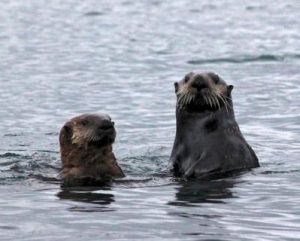
Sea otter resolution gets first hearing in Senate committee, asking Congress to amend the Marine Mammal Protection Act
A Senate committee Monday, March 12 heard from supporters and opponents of state involvement in the management of sea otters in Southeast Alaska. The Senate Resources committee held its first hearing on Senate joint resolution 13, which calls on the federal government to allow the state or a Native organization to co-manage the rebounding marine mammals and seek ways to increase harvest of otters. >click to read< 14:53
State seeks federal exemption to manage sea otters – The Legislature is considering two resolutions, one in the House and one in the Senate, asking Congress to amend the Marine Mammal Protection Act and,,, >click to read<
Pricey sea cucumbers face increasing sea otter appetites
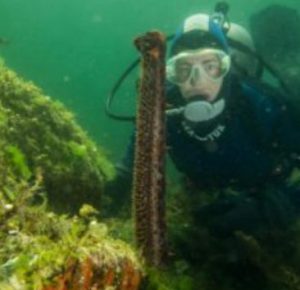 Sea cucumbers are the most valuable of Alaska’s dive fisheries and give a nice boost to coastal towns, especially in Southeast. Annual harvests each October hover around one million pounds and attract nearly 200 divers, who will fetch between $4 to $5 a pound for their pickings. The harvest used to approach two million pounds but sea otters have cleaned out cucumbers in many areas over the past decade. None of the areas they have gone back and resurveyed have they seen any sea cucumbers. It’s not like the otter come in and move on and the population rebounds. The otters stay. We’ve lost on an annual basis between 500-000 to 600,000 pounds of product and the trend is downward. Audio report, read the rest here 16:46
Sea cucumbers are the most valuable of Alaska’s dive fisheries and give a nice boost to coastal towns, especially in Southeast. Annual harvests each October hover around one million pounds and attract nearly 200 divers, who will fetch between $4 to $5 a pound for their pickings. The harvest used to approach two million pounds but sea otters have cleaned out cucumbers in many areas over the past decade. None of the areas they have gone back and resurveyed have they seen any sea cucumbers. It’s not like the otter come in and move on and the population rebounds. The otters stay. We’ve lost on an annual basis between 500-000 to 600,000 pounds of product and the trend is downward. Audio report, read the rest here 16:46
California sea otter population reaches record high number
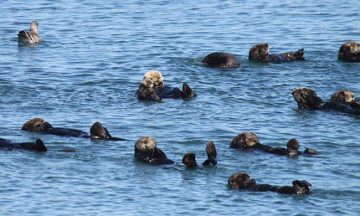 A growth in the amount of sea urchins, one of the otters’ favorite foods, seems to be the leading reason why otter numbers along the California coast have grown to 3,272 this year, up 11 percent since 2013, experts said as they released the latest survey. “The population is slowly but steadily recovering,” said Tim Tinker, a research biologist in Santa Cruz who leads the U.S. Geological Survey’s otter program. “And that’s good news because sea otters bring ecological benefits.”In fact, the otter population is likely at its highest level in at least 100 years, Tinker said. And for the first time, the otter numbers have exceeded 3,090, the total that the U.S. Fish and Wildlife Service says is needed to be met for three years in a row before they can be considered for removal from the endangered species list. Read the story here 13:45
A growth in the amount of sea urchins, one of the otters’ favorite foods, seems to be the leading reason why otter numbers along the California coast have grown to 3,272 this year, up 11 percent since 2013, experts said as they released the latest survey. “The population is slowly but steadily recovering,” said Tim Tinker, a research biologist in Santa Cruz who leads the U.S. Geological Survey’s otter program. “And that’s good news because sea otters bring ecological benefits.”In fact, the otter population is likely at its highest level in at least 100 years, Tinker said. And for the first time, the otter numbers have exceeded 3,090, the total that the U.S. Fish and Wildlife Service says is needed to be met for three years in a row before they can be considered for removal from the endangered species list. Read the story here 13:45
Burgeoning sea otter population in southern Southeast Alaska depletes commercial fishery species
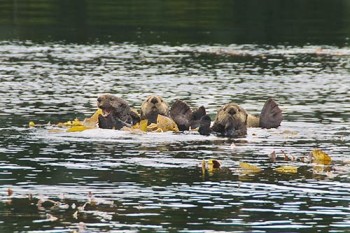 Sea otters enjoy feeding on sea cucumbers, sea urchins, Dungeness crabs and geoducks. Unfortunately, so do people. In southern Southeast Alaska, commercial fisheries for these invertebrate species provide income for local economies. At the same time, a growing population of sea otters is consuming the invertebrates. Predation from the otters is already having an economic impact on commercial fisheries, and the effect is likely to be even greater as the sea otter population continues to increase. Read the post here 07:43
Sea otters enjoy feeding on sea cucumbers, sea urchins, Dungeness crabs and geoducks. Unfortunately, so do people. In southern Southeast Alaska, commercial fisheries for these invertebrate species provide income for local economies. At the same time, a growing population of sea otters is consuming the invertebrates. Predation from the otters is already having an economic impact on commercial fisheries, and the effect is likely to be even greater as the sea otter population continues to increase. Read the post here 07:43
Draft Southeast Sea Otter Population Assessment Out
 The draft estimates a total of 25, 712 otters in the region. The number is based on aerial surveys done by researchers in 2010 and 2011. That compares with 10,563 otters in 2003. The otter’s rapid population growth and voracious appetite for shellfish has been a major concern for commercial crabbers, dive fishermen and subsistence harvesters. Listen, and Read more here alaskapublic.org 20:17
The draft estimates a total of 25, 712 otters in the region. The number is based on aerial surveys done by researchers in 2010 and 2011. That compares with 10,563 otters in 2003. The otter’s rapid population growth and voracious appetite for shellfish has been a major concern for commercial crabbers, dive fishermen and subsistence harvesters. Listen, and Read more here alaskapublic.org 20:17
Eco Based Management Failure: Otter battleground – Fishermen lose lawsuit in battle against sea otter; supporters relieved
 If you’re out surfing or walking along the beach, take a peek toward the Channel Islands. Among the seals, dolphins or rare whales, you might once again spot the California sea otter, due in part to the lifting of an artificial “no-otter zone” and a failed lawsuit to have it reinstated. Read more here vcreporter 12:18
If you’re out surfing or walking along the beach, take a peek toward the Channel Islands. Among the seals, dolphins or rare whales, you might once again spot the California sea otter, due in part to the lifting of an artificial “no-otter zone” and a failed lawsuit to have it reinstated. Read more here vcreporter 12:18
Filed on behalf of Fishermen, Pacific Legal Foundation Sea Otter Lawsuit Dismissed
 “Obviously, we think the judge’s decision is wrong,” said PLF attorney Jonathan Wood, whose sole option, as detailed by the judge, is to pursue an Administrative Procedure Act petition to rescind relevant parts of the 1987 rule. “Since the dismissal took place so recently, the fishermen are still considering their options to appeal.” Read more here independent.com 18:25
“Obviously, we think the judge’s decision is wrong,” said PLF attorney Jonathan Wood, whose sole option, as detailed by the judge, is to pursue an Administrative Procedure Act petition to rescind relevant parts of the 1987 rule. “Since the dismissal took place so recently, the fishermen are still considering their options to appeal.” Read more here independent.com 18:25
“I prefer my Sea Otter in a nice stew, thank you!” In Our View – Santa Maria Times- Ensuring life for all creatures
Good news for the otter, however, is not such good news for fishermen, especial sea urchin divers, who insist that the otters decimate the shellfish population. They’re right about that dynamic, but unfortunately for them, otters were fis hing these waters eons before human divers came around.
hing these waters eons before human divers came around.
The otter population is far from what it once was. By the time federal agencies began their attempt to relocate otters in an effort to save the species, the count had dropped from an estimated high of more than 16,000 in the late 18th century to less than 3,000. The dramatic depopulation was mostly a result of hunting during the early 19th century, in search of the otters’ luxurious fur.
This was a good year for otters, to be sure, but it looks like some fishermen will have to find a new way to earn a living.
And 2012 has also been a thumbs-up month for California’s marine reserve network, as the final piece of the underwater puzzle fell into place earlier this month in waters off the northern coast. Read More




































